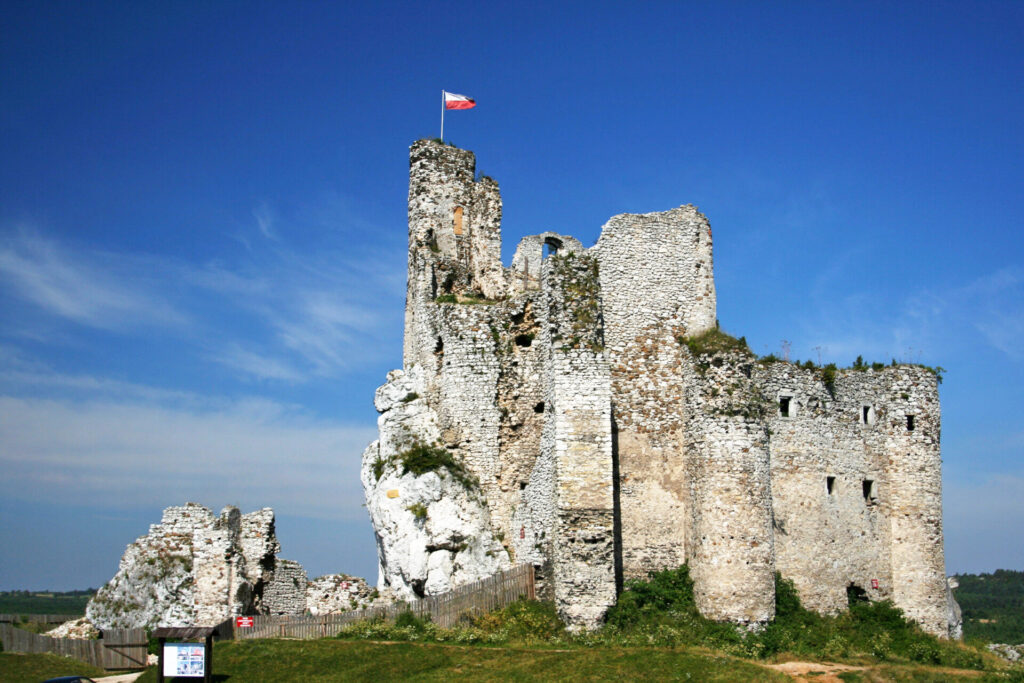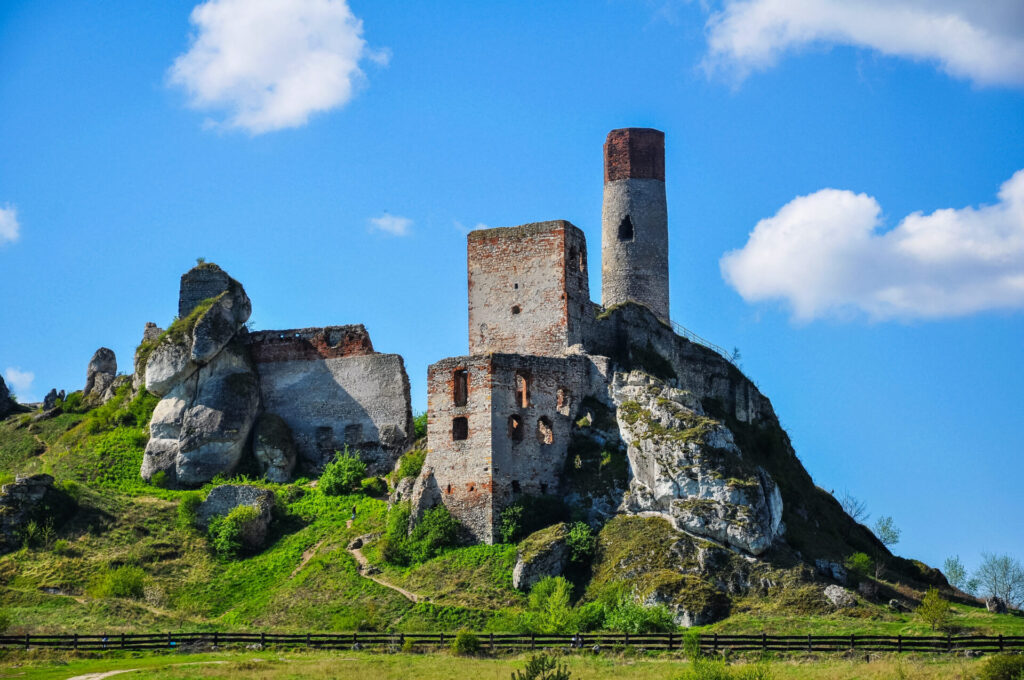On the Trail of the Eagles’ Nests in the Silesian Voivodeship








Once a system of medieval castles and other defensive structures guarding the borders of the Kingdom of Poland, today it is one of the biggest tourist attractions of the two voivodeships. The Trail of the Eagles’ Nests connects Kraków with Częstochowa, and owes its poetic name to the way the stronghold is located. Built on hard-to-reach limestone rocks, they are an ornament of the Kraków-Częstochowa Upland.

Ogrodzieniec Castle
Although it is a ruin, it is one of the most beautiful and famous Polish castles. The Ogrodzieniec Castle in Podzamcze is also the largest stronghold of the Kraków-Częstochowa Upland. Built in the mid-14th century on the order of Casimir the Great in the Gothic style, it changed owners many times before ending up in the hands of the Boner family in the first half of the 16th century, who transformed it into a magnificent Renaissance building. The further history of the castle – changes of owners, the Deluge, fires – slowly led to its collapse. The ruins of the buildings, which offer picturesque views, are open to the public and there are also mass events. Many times they also served as locations for blockbusters such as Janosik (the Polish television series) or Zemsta (Revenge – film based on Aleksander Fredro’s comedy). While visiting the castle, it is also worth seeing another building that is part of the Trail of the Eagles’ Nests – the ruins of the former royal stronghold in Ryczów, only a few kilometres away from Podzamcze.

Pilcza Castle
Moving west from Ryczów, you can reach the Pilcza Castle in Smoleń, which, although also a ruin today, remains one of the most picturesquely located strongholds on the entire Trail of the Eagles’ Nests. This is because it overlooks the area of a beautiful nature reserve. The conical hill, on which the remains of the building stand, was probably inhabited by people even before our era, as confirmed by archaeological excavations. The castle itself, in its first, probably wooden form, was built as early as the 13th century, and as a brick building in the 14th century. Its most famous owner was Elżbieta Pilecka-Granowska, the third wife of King Władysław Jegiełło.

Bąkowiec Castle
The history of the Bąkowiec Castle is not entirely clear. Perhaps a wooden stronghold stood in its place at the beginning of the 14th century, but it is also very likely that the defensive structure was built here on the initiative of Casimir the Great, during the construction of other Eagles’ Nests. It could also have been the work of Duke Vladislaus II of Opole, and thus originally served against the Kingdom of Poland. The castle began to fall into ruin after the Swedish invasion in the 17th century. In the times of the Polish People’s Republic, its area was transformed into a holiday resort, disrupting the austere image of the ruins with recreational infrastructure. A visit to the remains of the 14th or 15th century knight’s castle in Zawiercie can be combined with a trip to the nearby Rzędkowice Rocks and the Kroczyce Rocks.

Bobolice Castle and Mirów Castle
The Bobolice Castle in the Myszków poviat is an interesting example of a building that remained a ruin for centuries and was rebuilt in modern times. The Bobolice stronghold was initially a royal castle, founded by Casimir the Great. It owes its current appearance to the Lasecki family, who undertook to rebuild it. The twin, but not rebuilt, building is located less than 2 km from the Bobolice Castle. The Mirów Castle – one of the most beautiful buildings on the entire Trail of the Eagles’ Nests – is currently also in the hands of the same family. Although there are ongoing works to secure the ruins, part of the area where the castle is located is open to visitors.

Royal Castle of Olsztyn
Also founded by Casimir the Great and willingly visited by him, the stronghold is today one of the most recognisable buildings on the Trail of the Eagles’ Nests. High, resembling the mast of a ship floating on the sea, the Royal Castle of Olsztyn, apart from its defensive functions, also served as a prison for the nobility. The stronghold witnessed many tragic events, including the death by starvation of the Poznań Governor Maciej Borkowic and a dramatic siege by the Habsburg army. Today, open-air events are held in the castle ruins and they can also be visited. The remains of Royal Castle of Olsztyn have been immortalised in such film productions as The Saragossa Manuscript (in Polish: Rękopis znaleziony w Saragossie) or The Countess Cosel (in Polish: Hrabina Cosel). They also convincingly featured Bosnia in war-torn Yugoslavia in the film Demons of War (in Polish: Demony wojny według Goi).
The Silesian Voivodeship is the main partner of the Silesia Rally. Discover more tourist attractions of Silesia at slaskie.travel








